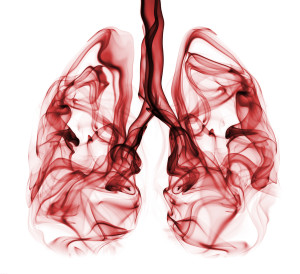 The Florida Lung Doctors want you to beware of all three types of dangerous tobacco smoking. We know you are probably aware of the dangers of numbers one and two: First hand smoke occurs when the actual smoker inhales his own smoke while smoking. Second hand smoke refers to your inhalation of the exhaled smoke and other burning air-born debris from a nearby smoker’s burning cigarette.
The Florida Lung Doctors want you to beware of all three types of dangerous tobacco smoking. We know you are probably aware of the dangers of numbers one and two: First hand smoke occurs when the actual smoker inhales his own smoke while smoking. Second hand smoke refers to your inhalation of the exhaled smoke and other burning air-born debris from a nearby smoker’s burning cigarette.
Did you know that there is a third type of poisonous cigarette smoke? Third-hand smoke is the second-hand smoke that drifts out of the air, settles on surfaces of furniture, countertops, drapes, household goods, and rugs. It ages over time and we know it does not just fade away. “It becomes progressively more toxic.” In fact, Manuela Martins-Green, a professor of cell biology at University of California, Riverside, states, “Second-hand smoke and third-hand smoke are just as deadly as first-hand smoke.” Along with colleagues, she conducted the first animal study of the effects of third-hand smoke.
Using mice, Dr. Martins-Green and her team researched “the effects of third-hand smoke on several organ systems under conditions that simulated third-hand smoke exposure of humans,” Sadly, they found significant damage occurred in the liver and lungs.
The statistics gained by their meticulous study not only will “provide a basis for studies on the toxic effects of third-hand smoke in humans,” but it will also help law-makers form regulatory policies. Such policies will focus on protection from  involuntary exposure to third-hand smoke.
involuntary exposure to third-hand smoke.
Studies have also proven that, “Third-hand smoke, which contains strong carcinogens, has been found to persist in houses, apartments and hotel rooms after smokers move out.”
Dr. Martins-Green and the University of California scientists found that the mice “exposed to third-hand smoke in the lab showed alterations in multiple organ systems and excreted levels of a tobacco-specific carcinogen similar to those found in children,” who had been exposed to second and third hand smoke.
1. In the liver, third-hand smoke was increased lipid levels and non-alcoholic fatty liver disease, cirrhosis and cancer. There were also clear indications that it contributed to cardio-vascular disease.
2. In the lungs, third-hand smoke simulate “excess collagen production and high levels of inflammatory cytokines, suggesting propensity for fibrosis, and “inflammation-induced diseases such as chronic obstructive pulmonary disease and asthma.”
3. In the skin, healing in mice exposed to third-hand smoke showed traits of the kind of poor demonstrated by human smokers who are attempting to heal from surgery.
4. In behavioral tests the mice exposed to the toxic, third-hand smoke showed erratic behavior and hyperactivity.
Prof. Martin-Greens stated, “The latter data, combined with emerging associated behavioral problems in children exposed to second- and third-hand smoke suggests that with prolonged exposure, they may be at significant risk for developing more severe neurological disorders.”
5. I n blood sugar levels, the findings led to the conclusion, “we have found that exposure to third-hand smoke results in changes that can lead to type II diabetes even when the person is not obese,”
n blood sugar levels, the findings led to the conclusion, “we have found that exposure to third-hand smoke results in changes that can lead to type II diabetes even when the person is not obese,”
Before this study, very little was known about the potential risks attributed to third-hand smoke exposure, acute exposure, or the alarming cumulative effects of it.
Martins-Green said. “There is still much to learn about the specific mechanisms by which cigarette smoke residues harm nonsmokers, but that there is such an effect is now clear. Children in environments where smoking is, or has been allowed, are at significant risk for suffering from multiple short-term and longer health problems, many of which may not manifest fully until later in life.”
There is no doubt that third-hand smoke poses a threat to certain groups. First and foremost, it threatens the health of the families of smokers. Studies have found contaminated dust on multiple surfaces as well as in the air of the homes of smokers. It is especially toxic in children’s bedrooms.
Did you know that Re-emission of nicotine from contaminated indoor surfaces in these households and work environments leads to nicotine exposure levels very close to that of actually smoking?
A t Florida Lung Doctors, we know it is not all about the mice and laboratory data. Social statistics on 1st, 2nd and 3rd hand smoke are also alarming.
t Florida Lung Doctors, we know it is not all about the mice and laboratory data. Social statistics on 1st, 2nd and 3rd hand smoke are also alarming.
For example, Studies show that children who live with one or two adults who smoke freely in the home, are actually absent 40 percent more days from school due to illness than children who did not live with smokers.
At The Florida Lung, Asthma & Sleep Specialists, we believe you might get a baseball mitt or bedstead or a favorite toy third-hand, but third hand smoke should never be passed down. Just remember, home is where the heart is, but it is also where the little lungs are!

